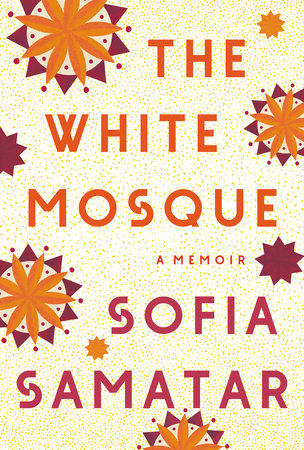At the end of the nineteenth century, a flock of Mennonites embarked on an exodus from their settlement in Russia to Central Asia. Their preacher, Claas Epp Jr., worked tirelessly to evangelize his own prophecy, drawn from the Book of Daniel: Christ was to return on March 9, 1889, and he would arrive in the East. In their black clothes like crows, in covered wagons drawn by horses, the “Bride Community” plunged into the desert to await their Bridegroom. They ended up settling near Khiva, in present day Uzbekistan, where their village—Ak Metchet, “white mosque,” named for its whitewashed church—would outlast their foretold apocalypse by decades, remaining for 50 years.
Sofia Samatar remarks early on in her piercing new memoir, The White Mosque, that implausibility drew her to the story of the Great Trek—the ecstatic failure of the prophecy; the random juxtaposition of two sets of images that appear opposite to each other (Mennonites! in 1880s Uzbekistan!). It garners disbelief, amusement. Samatar, too, has implausible origins: her mother a Swiss Mennonite from North Dakota, teaching English while on mission; her father, a Muslim animal herder from the Somali desert, teaching Somali to the missionaries. It is the kind of story that requires explanation, that becomes by default a sort of party trick. To have your very existence provoke such a reaction is exhausting. But it also builds an affinity for strangeness, confusion, the unlikely outcomes. “Beautiful error, radiant mistake!” So Samatar, suitcase stuffed with notes, joins a tour group, retracing the Mennonites’ journey, this time by bus.

The tour is the throughline, our grounding path of linear chronology, and the chapters are organized by location. But these numbered segments are then shattered into vignettes that flit, freeform, across space and time with the alacrity of thought, branching outward. Afloat on Samtar’s prose, which has all the sensory pleasure of an illuminated manuscript, we visit the diaries of the Mennonite travelers; the cavalier travelogues of Swiss athlete-photographer Ella Maillart, who visited Ak Metchet in 1932; the work of Khudaybergen Divanov, father of Uzbek photography and cinema, taught as a child by a Mennonite photographer; the trip taken by Langston Hughesto Soviet Central Asia; the career of Irene Worth, American actress, diva, and descendant of the Bride Community Mennonites; episodes from Martyrs Mirror, the seventeenth-century crown piece of Mennonite literary canon; Samatar’s own girlhood in the 1980s at a Mennonite high school in Pennsylvania. At one point, describing her intersecting and contradictory identities, Samatar says she is “not so much a hybrid as a Rubik’s cube.” The White Mosque is a Rubik’s cube of a book—a memoir but also an intricately researched cultural history and a work of theory—a treatise on the question: “How do we enter the stories of others?” Can we, without violence? And afterward, how do we remember the violence and remember, too, the kindness and wonder present in the exchange, if only by accident?
The Mennonites are a people in continuous exile, fleeing persecution for their radical refusal to aid and abet war. Simultaneously, they are ambassadors of empire, bulwarks of exceptionalism, delivering the Bible, sewing machines, farming techniques, and good German hygiene to humble dwellers of the rugged steppes. In Somalia, in the 20th century, they sowed martyrdom in their hasty wake—Samatar describes her own origins as “apocalyptic.” What to make of a religion, a people, that mythologizes and missionizes its whiteness even as its very missionary efforts have fundamentally transformed its demographics? What to make of the sojourn East, of the White Mosque, precarious and fleeting in history? What kind of neighbors were the Mennonites, in the nebulous zone between refugee and settler-colonist? “I want to rescue the story of the Great Trek,” says Samatar, listening to the tour guide lecture about the good fortune the Mennonites meant to Khiva, “but not at any cost.”
Claas Epp Jr. drew inspiration from Das Heimweh, a novel by a German doctor named Heinrich Jung-Stilling, which Samatar reads on the bus. Heimweh translates to something like homesickness or nostalgia—literally “home-ache.” The young protagonist, witnessing an injustice, is struck by Heimweh in his childhood home, as one is struck for the first time by love. In search of “the house of the Father,” he finds refuge near Samarkand, in an invented valley called Oestenheim, the Home in the East. The book factored into Claas Epp Jr.’s calculations, which placed the Bride Community’s Oestenheim in the city of Shakhrisabz.
The White Mosque is possessed with home-ache. At first it presents a problem. But Samatar forges it into a theory. To be mixed-race sometimes feels like having the permanence of diasporic exile written across your face—thus the indignant rallying cry: “I’m not half anything!;” the embarrassing, desperate hunger to belong and to be whole. Near the start of the book, Samatar talks about her “magpie condition”—a piecemeal approach to life, an instinctive aversion to wholeness. Later, she quotes Theodor Adorno: “It is part of morality not to be at home in one’s home.” Through this lens, the magpie condition is a gift. If home-ache is universal, hybridity makes it visible.
It is only in the Bride Community’s failures that Samatar finds relief from the totalizing narrative of missionary graciousness. They never made it to Shakhrisabz, the city they intended to reach. Ak Metchet, where they ended up instead, becomes “home as the site of transit, not ownership, a zone shot through with innumerable rays.”
From another diaspora, Theresa Hak Kyung Cha writes, “Our destination is fixed on the perpetual motion of search” (Dictee, 1982). In a careful, circular manner, the book develops a magpie approach towards cultural exchange. How do we enter the story of others? Helplessly, Samatar suggests, in exile, brought to our knees by our own strangeness. The epigraph of The White Mosque is a quote from Mennonite historian John L. Ruth: “The story has become luminous.” Samatar cracks the story open, a mosaic and a lantern. In between its shards comes the light.